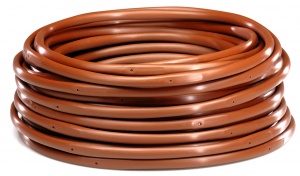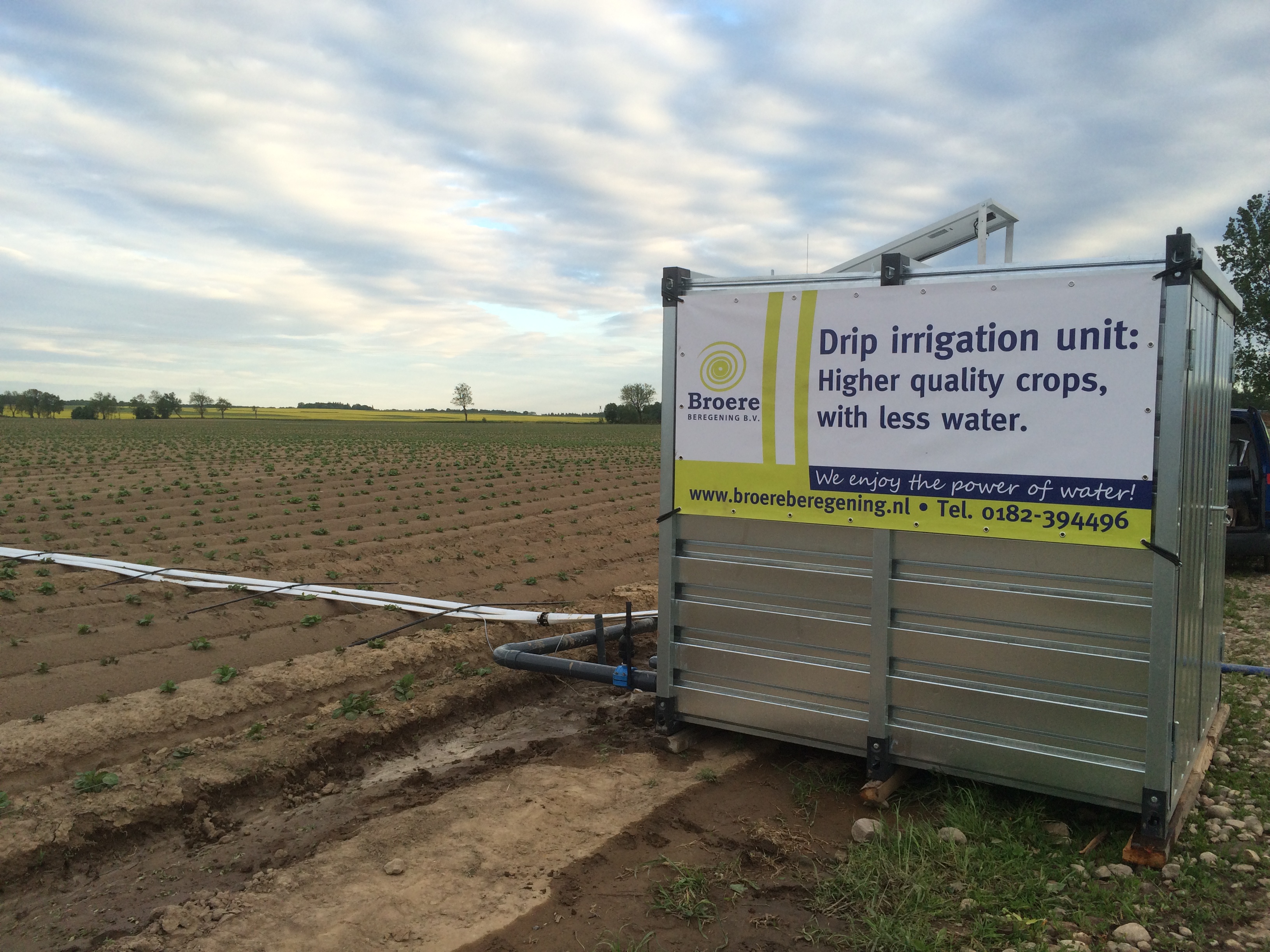Drip in line
Drip in-line is the way to go to get the highest water efficiency and the highest yield per acre. Using the perfect mix of nutriënts you can expect up to double the yield. A drip in-line sytem is often combined with accurate measurements of the condition of the allotment to maximize efficiency. Our Hortigreen mixers are the perfect solution to collect, analyse and use data to maximze your efficiency. Multiple drip in-line systems exist and all of them have similarities and differences. The most used systems will be discussed below.
Surface drip systems are drip systems using driplines on the surface or a few centimeters below the surface of the allotment. Installing the driplines happens almost simultaneously with the start of the cultivations. If the driplines are placed inbetween the ridges or on the surface the installation can be done by external parties as well. The driplines are recoiled just before harvesting and stored until the next season. Most of our fertigation units provide storage for the driplines and sublaterals. The type of dripline is chosen depending on the soil type. Some driplines can be used up to 10 cultivation rounds and some are only usable for one cultivation round.
 Subsurface driplines are located deeper underground than surface driplines. Subsurface driplines utilize the capillary function of the soil which makes the roots able to suck the water up through the ground eventhough the driplines are located well below the roots. This system is installed once and can be used 10 to 20 years when used properly. Because the driplines are located further underground plowing is possible without removing the driplines.
Subsurface driplines are located deeper underground than surface driplines. Subsurface driplines utilize the capillary function of the soil which makes the roots able to suck the water up through the ground eventhough the driplines are located well below the roots. This system is installed once and can be used 10 to 20 years when used properly. Because the driplines are located further underground plowing is possible without removing the driplines.

Sealed laterals are the new trend in the drip systems business. The hoses are easily installed and recoiled. The hoses are designed to be very resistant to UV radiation and chemicals. The intergrated connections makes connecting the driplines very easy. The hoses are also available without connection making them usable as transport pipes as well. Since the hose is flexible it can do no harm to run over the hose. Sealed transport pipes can be used underground as well.
We can arrange this for you. Every spring and fall we take care of installing and recoiling the driplines. Recoiling and laying is done using special machines designed specifically for this use.
 The most used type of irrigation for flower borders. A very low water consumption solution made possible by pressure compensating driplines that provide your plants and bushes with water very efficiently.
The most used type of irrigation for flower borders. A very low water consumption solution made possible by pressure compensating driplines that provide your plants and bushes with water very efficiently.
Can be applied on normal cultivation floors, on sloping floors, between irrigationmats and the groundcover or simply on the groundcover. This solution is mostly used when overhead irrigation isn't an option.
The mix of nutrients should be chosen in such a way that no nutrients are left behind in the dripline making it clogg up. This can be prevented using no-blockers or similar products. All HortiGreen driplines are fitted with a labyrinth to prevent clogging. Eventhough all the precautions are taking to prevent clogging it still remains important to flush the driplines from time to time. filth (mainly algae) kan clogg up the driplines or large particles can clogg up the labyrinths.
When the driplines are fed from one end most of the filth will clogg up the end of the dripline. How many times the dripline should be flushed depends on the quality of the water, the chosen dripline, the filtration of the water and the mix of nutrients. By opening the end of the driplines whilst irrigating you can see if the water is filthy and if the dripline should be flushed. We recommend flushing till the water at the end of the dripline is as clean as the water that is fed into the dripline at the start.
![druplsys[6]](https://www.broereberegening.nl/wp-content/uploads/2016/11/druplsys6.png)

